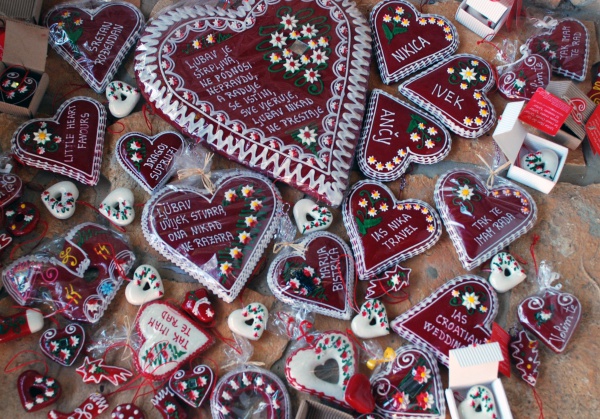Facts About Licitar
Licitars are exquisite honey dough biscuits that hold a cherished place in the cultural heritage of Croatia and Slovenia. These enchanting treats are a quintessential symbol of Zagreb, the Croatian capital, and are often exchanged as ornamental gifts during celebrations such as weddings and Valentine's Day. During the Christmas season, the city of Zagreb and its main square dazzle with thousands of licitar hearts.
In 2010, UNESCO recognized the gingerbread craft of Northern Croatia as part of the Intangible Cultural Heritage of Croatian culture, underscoring the significance of these sweet creations.
The tradition of making and giving licitars dates back to the 16th century. Skilled artisans known as "Medičari" were highly esteemed for their licitars, which were considered more heartfelt than a bouquet of roses. This tradition endures today, with a few dedicated artisans preserving family secrets in their production methods. Crafting a licitar is no quick task; it takes over a month to create one. Their simple shapes, vibrant colors, and intricate decorations have made them popular souvenirs at religious sites.
Licitars are made using traditional ingredients such as honey, flour, eggs, water, and natural colors. The preparation process is quite involved, requiring the dough to mature, be shaped, baked, dried, colored, decorated, and then dried again. Each licitar is 100% handmade and edible, often adorned with intricate swirls, flowers, and tiny mirrors. Despite frequently being called gingerbread, licitars do not actually contain ginger.
Today, licitars serve numerous purposes. They are treasured as traditional souvenirs, Christmas tree decorations, wedding favors, business gifts, and ornamental items. You can find them in Croatian and Slovenian airports and tourist gift shops, and they continue to be given as tokens of affection to loved ones.

 Bosnia and Herzegovina
Bosnia and Herzegovina